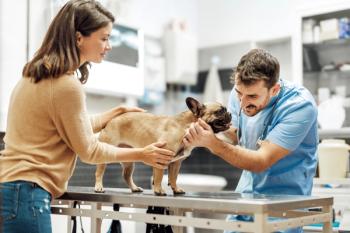
Four kitties ask: "Which veterinary client owns me?"
Four clients your practice has.
Illustrations from Getty Images. It's all creatures great and small-yes, even “felines” and their owners. If either one of these species is is a dreaded word in your practice, we have a game for you with a valuable prize!
Based on consumer data from advertising firm
You know not every cat owner is created alike. Some folks won't ever agree to spend much money on their favorite felines. But some folks you can reach! Let these four personality profiles and the accompanying insight inspire your team to better serve and understand cat clients (and maybe even like them) …
These “live and let live” pet owners are at the far end of the ownership personality spectrum, and they make up 37 percent of cat owners. As the name suggests, these owners aren't as close to their cats as the other cat owners. They like the idea of having a pet. In their mind, a cat is nearly self-sufficient. They'll leave food for them to eat for days on end, and cat food is all the same. These owners will take their cat in for an annual checkup, but the cat is happier when it's left alone, they think.
These clients make up 11 percent of cat owners. Often male and first-time pet owners, they depend on the veterinarian's guidance and recognize the importance of routine checkups and vaccinations for their pet. They're excellent at client compliance and listen to recommendations.
Making up 20 percent of cat owners, this slightly older group that has more women than men will project their preference for healthy living onto their cats. Nutrition and exercise are important to them. They believe they know what kind of food and exercises cats need. Homeopathic and natural diets or therapies are popular among these clients.
This highly attached group of cat owners makes up 32 percent of cat owners. Likely to be women, these owners are driven to get the best care for their cats. The Internet is a popular source of information for them. They do extensive research on the Internet, but they just want to be informed so they can visit the veterinarian and ask educated questions. These owners want to develop a relationship with their veterinarians.
Here's what these personalities and the data mean for your practice, according to Kimberly Ness from Trone Brand Energy:
Laissez-faire: They're not worth investing in or worrying about. It's going to be tough to get them on board.
Fitness & Foodies: One theory is that “Checks & Vacs” folks will move into “Fitness & Foodies” or “All About Health.” And you want them “All About Health.” You can help by talking about nutrition with pet owners, by embracing of what's of most interest to the pet owner. That's what these cat owners want and need to see you as the medical expert for their cat's care.
Checks & Vacs: This is the easiest for veterinarians. They'll do what you want.
All About Health: Veterinarians can embrace and work better with these cat owners. Embrace the idea that that pet owner is going to go to Dr. Google, but that Dr. Google is not the enemy. These pet owners will trust the veterinarian IF the veterinarian embraces their doing the research. Transparency is king; you need to show the pet owner you're a partner.
Newsletter
From exam room tips to practice management insights, get trusted veterinary news delivered straight to your inbox—subscribe to dvm360.






